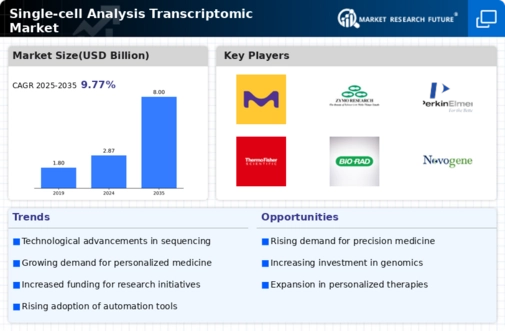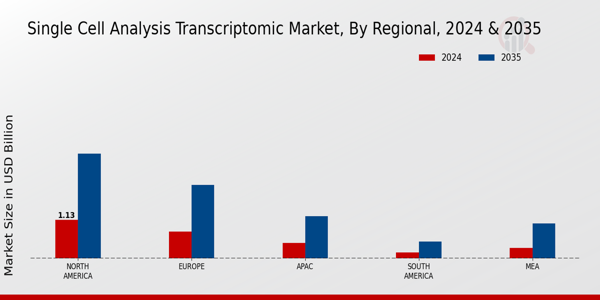Single Cell Transcriptomic Market Summary
As per MRFR analysis, the Single-cell Analysis Transcriptomic Market was estimated at 2.87 USD Billion in 2024. The Single-cell Analysis Transcriptomic industry is projected to grow from 3.15 USD Billion in 2025 to 8.002 USD Billion by 2035, exhibiting a compound annual growth rate (CAGR) of 9.77 during the forecast period 2025 - 2035.
Key Market Trends & Highlights
The Single-cell Analysis Transcriptomic Market is poised for substantial growth driven by technological advancements and increasing demand for personalized medicine.
- Technological advancements in sequencing are revolutionizing single-cell analysis, enhancing data accuracy and throughput.
- North America remains the largest market, while Asia-Pacific is emerging as the fastest-growing region in single-cell transcriptomics.
- Next-generation sequencing dominates the market, whereas microfluidics is rapidly gaining traction due to its innovative applications.
- Rising demand for precision medicine and technological innovations in sequencing are key drivers propelling market expansion.
Market Size & Forecast
| 2024 Market Size | 2.87 (USD Billion) |
| 2035 Market Size | 8.002 (USD Billion) |
| CAGR (2025 - 2035) | 9.77% |
Major Players
10X Genomics (US), Illumina (US), Thermo Fisher Scientific (US), Becton Dickinson (US), Merck KGaA (DE), Bio-Rad Laboratories (US), Fluidigm Corporation (US), Takara Bio (JP), Stilla Technologies (FR)


















Leave a Comment